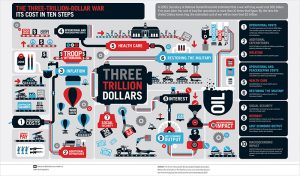It’s a noisy world, your marketing resources and headcount are limited and in some cases, you’re still defining who your customers are.
“What’s on the critical short list and what can we pushback till later?”
Four key marketing strategies are essential in today’s always on world: web site design, jettisoning old school SEO, content strategy and the old marketing favorite that’s been around since the pre $ 1B valuation days, creating lists.
Sounds mundane, but everything starts with a web site with these hallmarks: loads in under 3 seconds, 30% of your design budget was spent on images, it’s smartphone ready, has functional menus, working Google Analytics and Webmaster tools, has multiple calls to action on all pages.
Don’t think consumers or professionals are buying your product or service by itself – they want a brand experience and a web site is the front end.
What you can expect to pay: $ 3-5K for a standard twenty page web site, $ 5-10K for over a hundred pages, anywhere from $ 35. per hour up to $ 125. for HTML work.
Yes, you can get custom programming cheaper; but all markets are crowded and your web site look and feel is a key determinant of branding and customer perception.
WordPress is the only platform you ought to consider: it’s free, scales extremely well, has 10K+ plugins that extend it’s functionality, has a huge community of pros dedicated to it, is updated frequently, stable and bulletproof in a design context. It’s the industry standard.
- For good function web site design, think in iterative processes: 1.0 then 2.0 – don’t get bogged down into feature creep. It’s a time killer and 60 day project can easily turn into 3-4 months, costing you much more in the long run.
- Give your designers (in house or agency) enough leeway to give them buy in to the project. You have to balance your business objectives with the creative process.
- Build your site on a test server first and assess all functionality; then, move to your standard server.
- Hosting is now almost all generic and the biggest “gotcha” we see with hosting is crowded servers. You need FTP (“file transfer protocol” for uploading) and CPanel Access – 95% of most web hosts provide this functionality.
- Don’t stand up a web site without some kind of sales funnel with at least “crude A/B testing for product or service sales and an integrated newsletter list.
- Recognize 30-50% of your traffic is coming in via mobile – let this be one of the key determinants of your design (UX/UI): less is more.

Traditional SEO should not even be discussed in any meeting about marketing strategy.
It’s s a myth to think you can and should be manipulating search engines with back links, page keyword stuffing, duplicate content development, etc.
Save your money!
It’s old school and much of these processes are no longer relevant to Google or any other search engine.
Today, SEO rankings are a primarily combination of creating and sharing great content, building a web site that works for your visitor, coupled with basic on page SEO best practices we’ve outlined below.
- Think of Twitter as Google’s new SEO discovery engine – use Twitter to tell Google what new content has been added to your site, with hyperlinks embedded in your Tweets to the blog post or page.
- The Yoast plugin (free or paid) replaces a lot of old school heavy lifting and SEO agency fees.
- Make sure your page construction HTML “score” is correct – use the W3C Validator to check your code by pasting in a URL and checking.
- Write shareable smart copy: well written copy, educates and informs your audience.
- Don’t have a slow web site! Google penalizes sites with poor load times: checkout Pingdom’s site to understand your critical load times for a page. You want to be less than 2.5 to 3 seconds of load time per page.
Great content builds lasting impressions and pays for itself many times over.
Don’t ever substitute quantity for quality. Your business will need both moving forward. But, don’t confuse the two.
What you need to know to be effective with a content marketing strategy
- Start slow: content marketing is a marathon process that is inherently iterative: you learn as you go.
- Establish benchmark measurements at the outset: social engagement, revenue, email subscription, eBook download. Is your traffic converting?
- Keep moving forward: don’t get bogged down in the proverbial trenches.
- Align content marketing with other strategies.
- Involve your entire organization whether it’s five or fifty people: great content ideas come in all shapes and sizes: sales, customer service and/or exec staff.
- Probably 50% of the content across the social web “newsjacks” (see: any reference to pop culture any writer can dream up). Do it carefully.
- Mix and match snackable short form (images, under 300 word blog post, videos) with long-form “evergreen” high value content.
- “Chunk” and repurpose and syndicate content to leverage costs. An image curated and sourced for your web site should be featured on your pinterest board, shared on Twitter and recycled via multiple blog posts.
- Use an Editorial Calendar (download sample), it will help you organize and leverage downstream content marketing initiatives.

Lists may sound as boring as toast. They are not!
Your readers have an attention span of a gnat. – lists help to pull them into the content.
- Your readers, visitors are preconditioned to engaging with content that uses lists.
- Lists drive immediate engagement and move visitors into a sales funnel.
- People want evidence, perspective and answers in your content and lists help to convey all.
- Lists facilitate updates – there is no shame in cutting and pasting updated content via a list.
- You can brand jack your biz into a list. Is this self-serving. Yes, but done frequently.
- Lists facilitate content re-purposing via other content forms (email, other blog posts, social content) which is a fundamental “tool” in any content marketer’s toolbox.
- Every good blog post starts with a list: those scatter-shot ideas can then be fleshed or “listed” out, no pun intended.
- Brands can be creative with lists: use them as a shorthand way to poll your staff, customers, partners, BOD members and any other stakeholders for company, product, customer wins and content marketing topics.
- See texting as a way of life for many today. These people “live” on lists (stretching the metaphor a bit)- so, map your content accordingly.
Rent vs. Own Digital Strategy Takeaways
Remember your business is renting on social media and presence, content shared and more are all subject to change.
You have “command and control” capabilities with a web site and content.
And, you are investing in digital assets that will appreciate over time.
Business Articles | Business 2 Community
(347)






